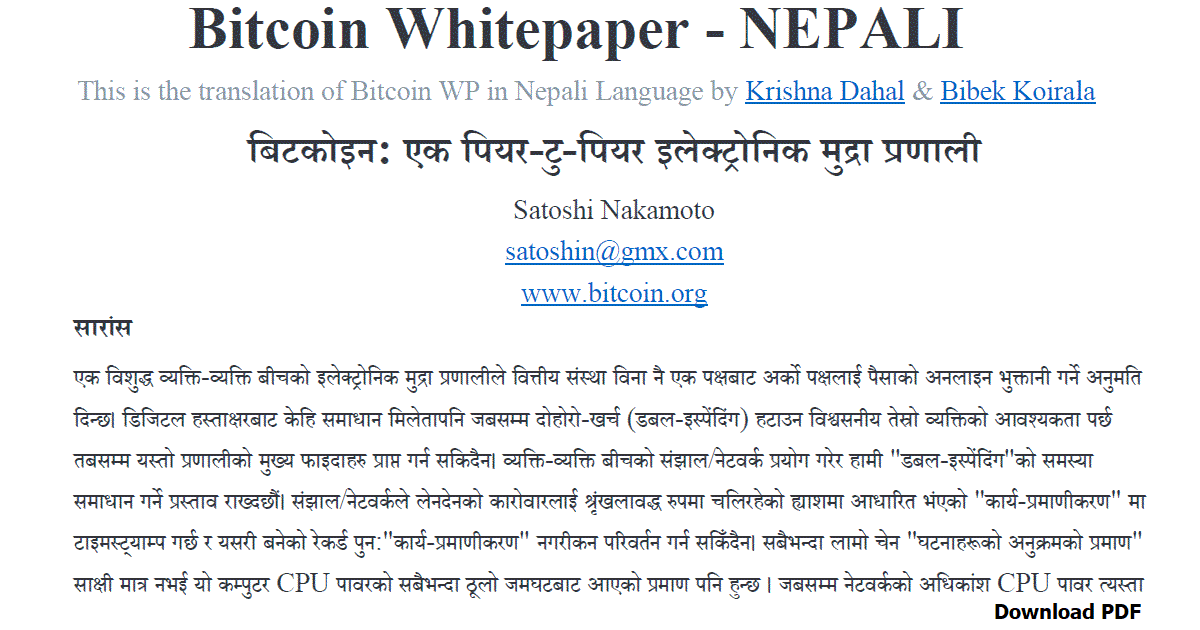
Bitcoin Whitepaper in the Nepali Language- Bitcoin: A peer-to-peer electronic currency system: A purely person-to-person electronic currency system allows online payments from one side to the other without the financial institution. Even with some digital signature solutions, the main benefits of such a system cannot be realized unless a reliable third party is required to eliminate double-spending.
We propose to solve the problem of "double-spreading" by using an individual-to-person network.
The network timestamps the transaction's transactions into a series of hash-based "work-authentication" and the record thus created cannot be changed without "work-authentication" again.
The longest chain is not only the "evidence of the sequence of events" but also the evidence of the greatest accumulation of computer CPU power.
As long as most of the network's CPU power is controlled by nodes that do not attack the network in sync, they generate the longest chain and defeat the invading nodes.
This type of network requires only minimal infrastructure. Messages are transmitted on the basis of best efforts, and nodes can voluntarily leave and rejoin the network, accepting the longest series of "work-authentication" as evidence of what happened when they were absent.
Business on the Internet is completely dependent on financial institutions. Financial institutions process electronic payments by serving as trusted third parties.
While this system handles transactions fairly smoothly, it still suffers from the underlying weaknesses of the trust-based model.
In this system, completely reversible transactions are not really possible. This is because financial institutions cannot avoid non-mediation in times of dispute.
The cost of intermediation increases the cost of the transaction, which minimizes the size of the minimum transaction and eliminates the possibility of small contingency transactions, thus losing the ability to make irreversible payments for irrevocable services.
The need for trust increases as soon as there is a possibility of reversing the transaction. And merchants need to be more aware of their customers because they are unwittingly harassing their customers with too much information. Even a few percent of the fraud has to be accepted.
These costs and payment uncertainties can be removed using physical currency, but we have no mechanism to make payments through the media without a credible side.
We need an electronic payment system based on reliable cryptographic evidence. Which allows any two interested parties to transact directly with each other without the need for a third party.
Sellers avoid fraud when there are quantitatively reversible transactions, and buyers can be easily protected by implementing a regular escrow system. To solve the problem of "double-spacing" in this paper we will use timestamp servers distributed between individuals which generate chronological computational proof of transactions.
As long as honest nodes collectively control more CPU power than invading nodes; Until then, the system is safe.
| This is the translation of Bitcoin WP in the Nepali Language by Krishna Dahal & Bibek Koirala - All right reserved to Satoshi Nakamoto, [email protected], www.bitcoin.org |





